#multiracial black girls
Text
Nesha's Lightskints Badge
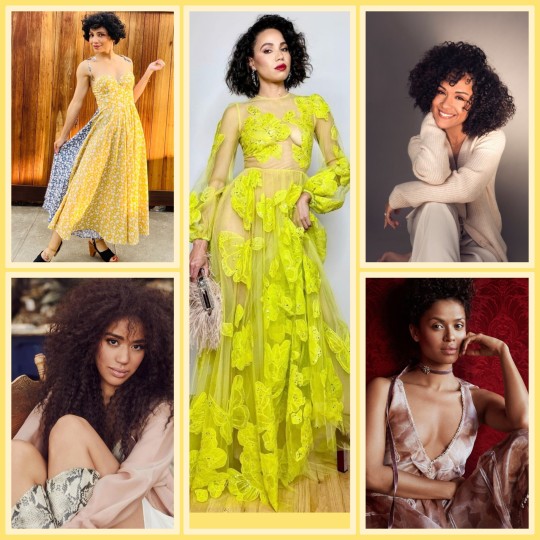

Jurnee Smollett
Grace Byers
Gugu Mbatha-Raw
Jasika Nicole
Jasmin Savoy Brown
Jackée Harry
Vanessa L Williams
Cree Summer
Storm Reid
FKA Twigs
Corinne Bailey Rae
Antonia Thomas
Zawe Ashton
And those are my favorites!

Edit: WAIT! I accidentally didn't put Bianca Lawson into it. 😭😭😭
14. Bianca Lawson
#Nesha's Lightskints Badge#my favorite lightskint#my lightskint wife#and others#jurnee smollett#i really need to change her tag#ugh notes for housekeeping#grace byers#gugu mbatha raw#jasika nicole#jasmin savoy brown#jackee harry#vanessa l williams#cree summer#storm reid#fka twigs#corinne baily rae#antonia thomas#zawe ashton#multiracial black girls#black actresses#black actress compilation#Nesha Photosets#faves#Nesha's Faves
49 notes
·
View notes
Text

September 2, 2023: @myaplanet9, Mya @ the 1st Annual Caribbean Music Awards.
#other#mya#mya harrison#wonderfulwoc#femaledaily#flawlesscelebs#flawlessbeautyqueens#black femininity#r&b#random icons#r&b girls#r&b artist#r&b music#reblog#multiracial#caribbean#caribbean music#caribbean music awards
118 notes
·
View notes
Text
instagram
#KhadijhaRedThunder is a #mixed American model-turned-actress making her acting debut in 2019 with the #Wattpad film After, & in the 2020 sequel, After We Collided.
Born & raised in Spokane, Washington, Khadijha boasts a diverse heritage, including #NativeAmerican (#Chippewa #Cree) #Black & #Spanish ancestry. As a teen, she moved to Seattle where she started modeling. Many might assume that Thunder is a stage name, but its actually her real last name.
Shes known for her curls, but she didnt always have them. Her hair was straight growing up & only became curly after she cut it shorter at 13. Since then, her hair has grown curlier each year. “I try everything, but I would never permanently change my curls. They are my life. I love them.” And would you, if you finally had something you been dreaming of since childhood?
"I grew up around #NativeAmericans. My mom was the only one who was Black, she was the only one with curls. Seeing my mom with her curls played such a big part in how I perceive hair. Just how a parent, in general, affects everything. She never complained about her hair being curly; she was always embracing it. She was just so beautiful & carried herself so elegantly. I dont know—seeing a woman so strong, beautiful & natural, to me, shes just an amazing entity, this phenomenon. Straightening her hair was a rarity. She taught me from a young age that it was damaging to apply heat to your hair. I wasnt allowed to use heating tools. She just really showed me the best route was to be your natural curly self."
"Compared to my other friends who are mixed who grew up with two different cultures & only saw beautiful women on tv with straight hair, it totally affects & hinders their outlook on having curly hair. It would be seen as “wild” or “sexy”—they sexualize curly hair. It wasnt elegant. But seeing my mom being so elegant & ladylike with curly hair, feeling like she was embracing her true self, Ive always liked that. Shes always taught me that."
Her first modeling gig was with Nordstrom & she has since collaborated with DKNY, Marc Jacobs & Puma. 🏴🇺🇸🇪🇸🪶
#wcw #nativeamericanheritagemonth #mixedgirl #mixedgirlshoutout #mixedgirlhairstyles
#biracial#mixedgirls#mixedrace#mixedgirlbeauty#mixedchick#beauty#multiracial#mixed native#black native american and spanish#curls#curly hair#curly girl#mixedgirlproblems#multiethnic#being mixed#mixed women#mixed models#mixed actress#after movie#after we collided#khadijha red thunder#Instagram
9 notes
·
View notes
Text

@beckydenimjean
#ming lee simmons#kimora lee#fashion#style#beauty#models#ultimate beauties#beautiful#blackfashion#black girl#melanin#brown skin girl#multiracial#life in the fab lane#baby phat
23 notes
·
View notes
Text
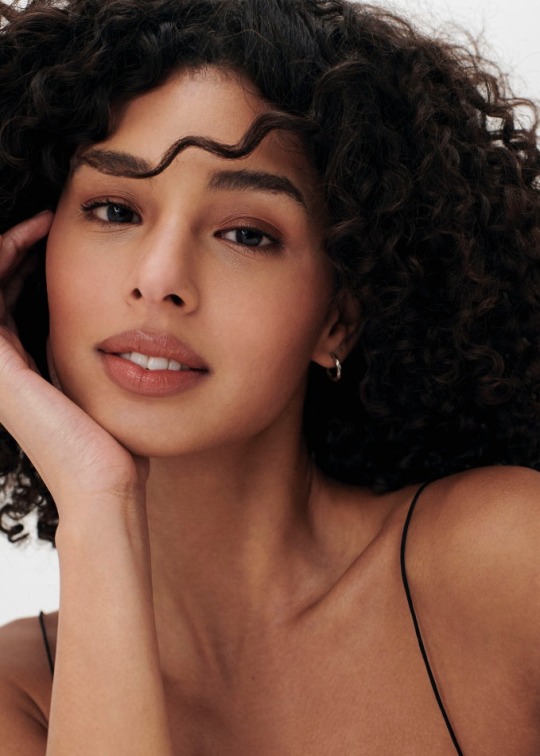

Paris Naro - Mixed American, 1994
#face claims#female face claims#female models#beautiful girls#face claims central#models#character inspiration#fan cast#fancast#wattpad#american#black#black face claims#black female face claims#female black models#black models#black female models#mixed#multiracial#latin#latino#latin american#latino american#latin american models#latin models#latin model#latinas#rp#rpg#rp oc
0 notes
Text
i enjoy nicki and meg. they’re my favorite female rappers. & i don’t have to much to say on the lyrical part of this beef just because it’s rap. they’re getting back to their roots lmao. at least it’s between two women who can ACTUALLY rap. anyway, i find it very heinous of nicki minaj to go on twitter & (whatever radio station app she uses) to talk about megan’s traumatic events to her extremist parasocial fanbase so they can harass meg literally for the rest of her life. i think why i find it so heinous bc nicki opened up about her domestic violence trauma with the rapper meek mill on queen radio & twitter about 4 years ago and played out the whole protect black women shtick from then until now. if it really was protect black women would you have to go to the extent your going to. like in 2018-2019 yk what it felt like to be hated by the world. you had a BIG hate train. meg experienced her hate train in 2023. yk what it feels like to be unprotected why would you put her through the same positions if it’s protect black women? & don’t even get me started on the black woman thing like you stamped yourself as the multiracial lightskin black girl. to be black but not really black. looking trinidadian, japanese, and indian! like you’re nicki minaj get a gripppp. your influence and catalogue is way more than arguing with these young adult woman. you’re convicted rapist husband and now registered sex offender, gang affiliated, gutterbutt husband already took years from your lifespan pls don’t damage it further.
#nicki minaj#megan thee stallion#41 and insecure#megan’s law#megan got her real good#i’m messy so i’m going to enjoy this rap beef#i wish nicki minaj knew she was nicki minaj#my 10 year old self is very sad but it happens to the best of us#pink friday 2#if she didn’t have that hood booger rapist she calls her husband around her they wouldn’t have nothing to clock her on
19 notes
·
View notes
Text


Even though Ruby Bridges lived a few blocks from the school, her parents initially had reservations about sending their daughter to an all-White school. After all, no one had ever successfully crossed that line before. Ruby and her mother were escorted by four federal marshals to school every day that year. We can see photos of Ruby walking past crowds of White people "screaming vicious slurs at her." Despite the cruelty, Ruby mentioned that the only thing that really frightened her was "when she saw a woman holding a black baby doll in a coffin." Even though Ruby was only a child, she experienced the full brunt of America's racism. Perhaps, the cruelty shown towards Ruby Bridges is why some White parents would rather hide her story than let students discuss her role in history.
One parent petitioned for the removal of a Ruby Bridges film produced by Disney from Florida classrooms, suggesting it would "teach White children to hate Black children." Even though the film had long been part of the Pinellas Country Black History Month lesson plan, efforts to censor historical events that shed light on the experiences of Black Americans have become common in the state. The irony isn't lost on me that the North Shore Elementary parent suggested the story inappropriate for second graders even though Ruby Bridges, who the story centers around, was only six years old when she enrolled in first grade and experienced racial discrimination.
Courage is not a race-neutral concept in America.
The unwillingness of some to view Ruby Bridges as heroic has a lot to do with two competing worldviews. On the one hand, those who believe racial segregation was appropriate or that exhibiting racial bias should be socially acceptable will view Bridges as a troublesome presence, a reminder of how formal systems of racial discrimination impacted Black children. On the other hand, those who view racial discrimination as abhorrent and are interested in seeing racist systems dismantled may view Bridges as a symbol of courage, a reminder of America's potential to become a multiracial democracy that treats citizens equally. Unfortunately, this disparity in belief systems has contributed to a vast censorship movement and the active suppression of stories that show Black Americans' tenacity and courage.
It took the courage of Ruby Bridges and her family to challenge the Jim Crow system, but sadly, this is the type of courage states like Florida don't want us to speak about. Because telling the Ruby Bridges story would require discussing the formalized system of racial discrimination that persisted throughout much of America's history. Black children endure racism, but somehow, White children are too fragile to hear about their experiences is not a neutral perspective; it's creating a type of plausible deniability so that White Americans, once out of school, can insist, "I didn't know about racism because I wasn't taught," all while perpetuating racism. Furthermore, to say the Ruby Bridges story would encourage White students to be racist assumes the worst by implying they would side with parents and students yelling racial slurs rather than Ruby, a six-year-old child experiencing discrimination. You don’t have to be Black to understand how painful it is to be bullied.
...others know precisely what they're doing by boycotting Black history and literature. It's as if they are ashamed that they don't see Ruby Bridges as courageous, that racism prevents them from rooting for a six-year-old little Black girl, so they rather bury her story.
(continue reading)
#emily conklin#politics#ruby bridges#white fragility#courage#republicans#whitewashing history#erasure#revisionist history#education
119 notes
·
View notes
Text
Honestly- I don't mind Sigyn and the Logyn ship itself. I just found it eye-rolling whenever I see her as a typical white woman while she's paired up with Atreus in this fandom. Understandable, since Sigyn is usually shown as a white woman throughout the media in Norse retellings.
Just feels like they preferred Atreus with a white girl instead of Angrboða, and overall made it difficult for me to like Sigyn as a additional character. Even if they made them as a throuple to add into possible poly ships in GOW, Angrboða would still be written off considering that Giants aren't entirely immortal to begin with.
And due to my experience with this fanbase, I know for sure if Sigyn were included in GOWR, those kinds of fans would have relished the romantic pairing between Atreus and Sigyn just as they did with him and Thrúd (and not to mention it would put Angrboða as the "Disposable Black GF" trope in the narrative).
It sounds like it doesn't matter if it was accurate to canon mythology or even to Sigyn, when it's hard not to feel like it mattered more for them see Atreus have a white love interest be there for him like arm candy. Funnily enough- It feels like they forgotten that Atreus isn't entirely white, but biracial/multiracial who passes off as white from the start. So their bias against Angrboða being Atreus' love interest made no sense whatsoever.
#Kratioed Speaks#God of War#God of War: Ragnarök#God of War: Ragnarok#God of War Ragnarök#God of War Ragnarok#gow#gow Ragnarök#gow Ragnarok#gowr#anti Sigyn#this will be the last time i talk about S1gyn in a negative light- promise! :)
12 notes
·
View notes
Text
Meet the ‘sisterhood’ making noise — and history — for Mardi Gras

At the edge of the square, members of the St. Mary’s Academy Cougar Marching Band stood stone-faced as they awaited the parade in tight formation. The band’s drum majors, Gilbrelle Stokes, 18, and Charland Thibodeaux, 17, stood at the ready, blue whistles in their mouths, as they prepared to direct the school’s 150-member marching unit, complete with a band, color guard, majorettes, flag team, dancers and cheerleaders.
Thibodeaux, a senior who has been marching with St. Mary’s since the third grade, was unfazed by the pressures of commanding such a large group.
“I always feel ready,” she said. “I been doing it so long.”
Marching band culture in New Orleans is ubiquitous, with groups performing at parades, weddings and funerals alike. Most locals can name their favorite high school bands, which are a highlight of Carnival season for all. School marching bands also serve as a training ground for the pipeline of talented professional musicians who steadily emerge from this birthplace of jazz.

“Band is a culture here unlike any other place,” said Pamela Rogers, 66, St. Mary’s president and acting principal. Sharp. Witty. Thoughtful. Sign up for the Style Memo newsletter.
“Bands define schools,” she continued. “And everyone knows we’re the girls with the skirts.”

St. Mary’s Academy’s skirt-wearing band first formed in 1937, making it the oldest Black girls band marching in the city. Today, it is one of just a handful of all-girl bands to regularly appear in Mardi Gras parades.

The school opened its doors in the French Quarter in 1867 and is still run by the Sisters of the Holy Family, a Black Catholic order founded by Henriette DeLille in 1842. DeLille, a multiracial nun (and current candidate for sainthood), believed in providing education for girls of color even when doing so was illegal. St. Mary’s was the first secondary school for Black girls in New Orleans.
This year, the St. Mary’s band will don new skirts for the first time since 2005, when its blue and gold uniforms had to be replaced after Hurricane Katrina’s floodwaters destroyed the school. The new skirts are a touch shorter than those they are replacing — a move staff hoped might increase student interest in the band. They’re still quite long though, even by Catholic school standards.
This Mardi Gras season also marks the first time Raynice Crayton, 27, will be at the band’s helm. A St. Mary’s alumna who joined the band as a seventh-grader, Crayton has already more than doubled band membership during her short tenure as director.
The group’s 52 players have varying levels of experience, from novices to passionate musicians, and they range in grades from fourth to 12th. In New Orleans East, where the school’s campus has been located since the 1960s, Crayton spends hours teaching girls the 10 tunes they will perform this Carnival, ranging from traditional music to a Janet Jackson song to the group’s favorite this year: “Talking in Your Sleep” by the Romantics.
“A lot of people don’t understand this, but band is a sport,” Crayton said.

The group’s schedule is packed tight, with the band performing in eight parades this Carnival season over the course of just two weeks, in addition to their regular school obligations and band practices. Parades last hours and typically happen rain or shine. The girls must traverse tightly packed 3.5-mile routes, all while carrying heavy instruments, entertaining rowdy crowds and dodging beads, puddles and occasionally horse manure.
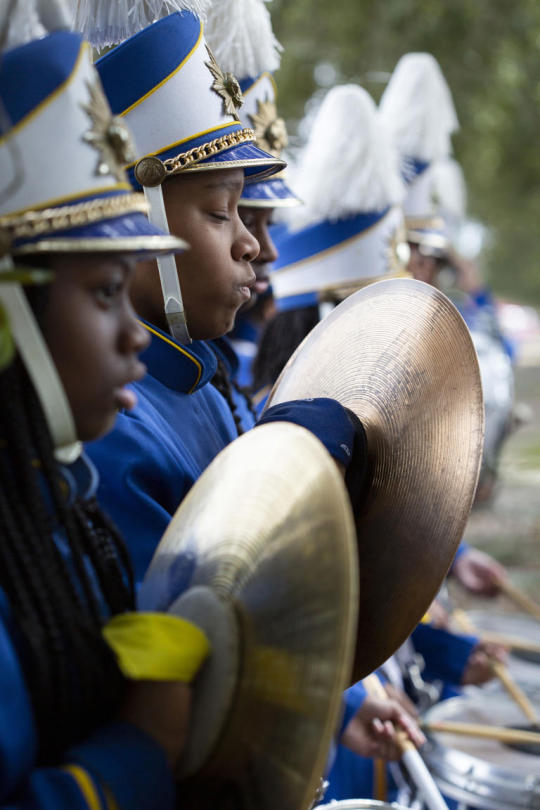
The Cougars carry fiberglass sousaphones, which are lighter than the traditional brass, and use smaller-size bass drums. Gayland Thibodeaux, 53, a nurse, St. Mary’s alumna and mother to the band’s drum major, provides medical support to students along the parade route. She carries the requisite wraps, bandages and medications, plus some extra “girl stuff” in case of emergency.
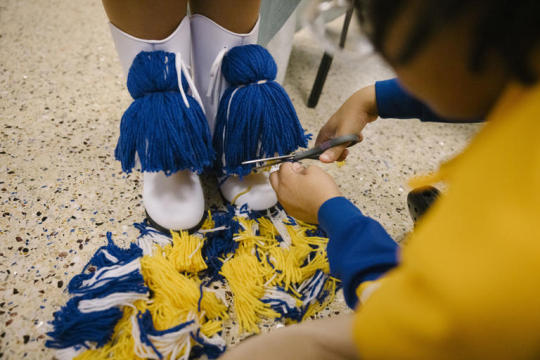
High school bands have been a part of Mardi Gras festivities since the 1930s, though predominantly Black bands like St. Mary’s were not welcomed into some well-known parades until the 1960s. This weekend, the girls marched in Endymion, one of Mardi Gras’ largest and most well-attended parades, a decades-long tradition.
Ra-Saiya Lovick, a 13-year-old seventh-grader who is new to St. Mary’s, said this will be her first time marching in Carnival parades, a lifelong dream. Lovick, a cymbal player, is thrilled to share the experience with her all-girls band.
“It’s so cool, because you don’t see no boys around. It’s no boys drama,” she said. “It’s like a sisterhood.”

n a city famous for its music, few local institutions have nurtured young Black female musicians quite like St. Mary’s.
The Original Pinettes Brass Band, founded in 1991, originated at the school and today plays regularly across New Orleans and beyond. Still, the band’s tagline – “the only female brass band in the universe” — is indicative of just how far there is to go.

Two years ago, Troy Sawyer, 44, an award-winning trumpet player and music educator who grew up marching with the all-boys St. Augustine band, founded Girls Play Trumpets Too in response to the gap he saw between how girls and boys fared in the New Orleans music scene.
“For a long time, I felt like girls and women could not play the trumpet on the professional level, because I didn’t see any doing it,” he said.
Sawyer’s organization aims to teach girls about overlooked female musicians in history while also fostering their musical skills.
In New Orleans, such skills can be more than a hobby: Crayton, the St. Mary’s band director, received a full-ride college scholarship for her tuba playing.

“When I joined the band, it was always, ‘Boys play tuba, boys play drums,’” she said. “So those were the first instruments that I went to, because you already counted me out.”
Back on the parade route, Rae’Lynn Walker, a 13-year-old eighth-grader, was excited to play her weathered sousaphone for the thousands of onlookers awaiting the bands. The instrument – now held together with a bit of tape – is the same sousaphone Crayton played when she was a student.
“We’re making history,” Walker said with a smile. “And the crowds notice.”

On St. Charles Avenue, Marie Bookman, 60, shouted, “Girl power!” as the Cougars marched by her. Bookman, a former magistrate court commissioner, said she loves seeing an all-girl band.
“It gives them the opportunity to reach higher goals,” she said. “They can compete with the men, and not just cheer for them.”
Crayton hopes the band will continue to serve that purpose for many decades to come.
“We are not here to see the parade,” she reminded her girls before Sunday’s long march. “We are here to be the parade.”
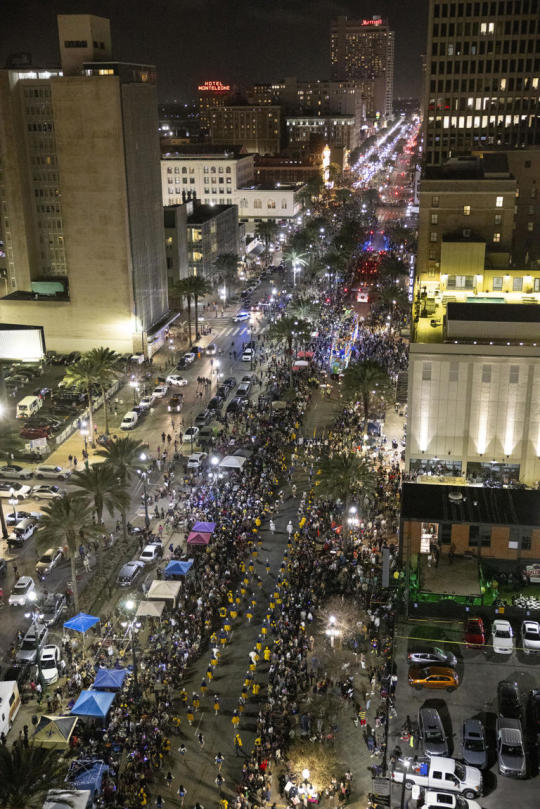
#Meet the ‘sisterhood’ making noise — and history — for Mardi Gras#https://www.msn.com/en-us/news/us/meet-the-sisterhood-making-noise-and-history-for-mardi-gras/ar-BB1ib5Kx#Black Musicians Matter#Black History Matters#Black Women Matter#New Orleans#louisiana#Mardi Gras
13 notes
·
View notes
Text
Multiracial Companionship: To Wong Foo, Thanks for Everything! Julie Newmar
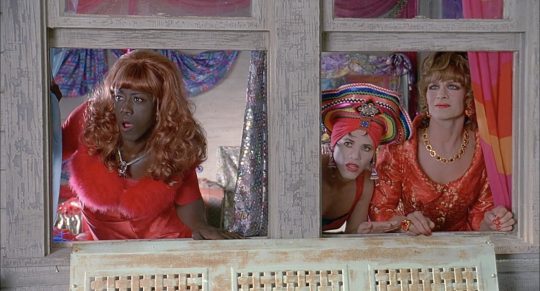
Saddled with potentially one of the most verbose and ridiculous titles in cinema history, To Wong Foo, Thanks for Everything! Julie Newmar is the campy romp of three New York City drag queens, played by Wesley Snipes, Patrick Swayze, and John Leguizamo who find themselves stranded in a midwestern town after their car breaks down on their way to Hollywood to compete in the Miss Drag Queen of America Pageant. The girls take the town by storm, form wholesome friendships with the classy ladies of Snydersville, Illinois (makeover alert!), navigate tensions with the town’s law enforcement, and chaos and glitz abound.
To Wong Foo represents an imagining of the multiracial buddy movie interested largely in the compartmentalization of identity categories with a concerted interest in gender and sexuality and a resistance to intersectional understandings of identity categories. The main characters being White, Black, and Latino is a fact the film acknowledges with the cinematic ideal of a post-racial U.S.--most importantly, To Wong Foo reminds us, the girls are drag queens, and their racial positionality comes second. The hierarchical ordering of their internal differential social orders that imbue their embodiment firstly with sexuality and gender rather than race comments on the film’s attempt to make a film by and for queer people in response to the growing conservative fear of a departure from traditional values and attempts to largely overwrite race.
youtube
My inspiration for the script came from watching the religious right videotape The Gay Agenda. There’s a scene where they show drag queens going through a town, and the narrator is warning viewers that these people will take over your town, and I thought, ‘Well, that would be fun.’
-Douglas Carter Beane, Screenwriter, To Wong Foo, Thanks for Everything! Julie Newmar
In, “The Black Image in Protective Custody: Hollywood's Biracial Buddy Films of the Eighties,” Guerrero explains that black people “appear on the screen in the 1980s predominantly in the biracial ‘buddy formula,’ which reveals all the strategies by which the industry contains and controls the black filmic image and conforms it to white expectations.” Noxeema, the film’s main Black character played by Wesley Snipes quips about Blackness and her status in this small town is effectively placed in the protective custody of whiteness, severed from the Black community surrounded entirely by non-Black people and at an increased risk of violence in this small town. She at one point jokes that "the last Black person to stay [in this town] was Sam Cooke," a prolific Black soul artist who was famously murdered in a motel.

The racial tensions in the movie are tonally consistent with the film's self-aware insistence on its own levity, poking fun at itself and acknowledging racial and gender regimes, but ultimately suggesting they can be overcome.
Noxeema: You and your causes! Look, that child is Latin. You don’t want to get mixed up in all that Latin mess. She might turn out to be a Sandinista or something.
Vida: Noxeema Jackson! I have to admit that I am shocked and just a little bit saddened by you. I mean you of all people. Hon, I remember the first time I laid eyes on a certain ebony enchantress in the rough, and how through styling and the occasional makeup tip I helped her look a little bit less like Moms Mabley. And who would think that ebony enchantress would one day share a title with moi.
In an atmosphere where whiteness is presented as the absolute authority, the exchange fails to fully present itself as an examination as racism among people of color and ultimately portrays Vida, who is white, as the gatekeeper of Noxeema's successful identity as a drag queen.
To Wong Foo, ultimately, is optimistic about the possibilities for a multiracial, post-gender regime world--it imagines a world where drag queens take over the town and racial tensions can be assuaged with the power of friendship. It mostly neutralizes race as a factor in the marginalization of the girls, and its depiction of state violence at the hands of an idiotic, bumbling sheriff who is scared of change holds a mirror to conservatism and distorts it like a fun house in return.
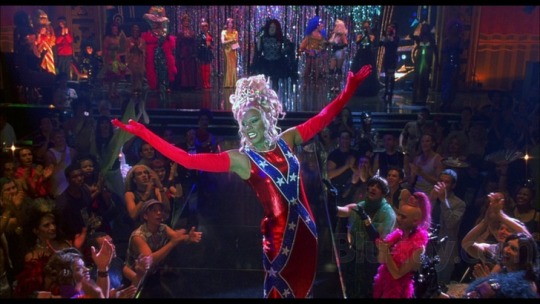
youtube
Questions:
How does the film's casting of three mainstream straight, male actors as drag queens contribute to the racial and gender politics of To Wong Foo?
What might the levity of the film regarding racial and gendered violence contribute to it?
How does drag as a performance art relate to racial embodiment in general? How might it play into the film specifically?
17 notes
·
View notes
Text

Anais and Mirabelle Lee: January 9, 2007
#Anais Lee#Mirabelle Lee#Happy Birthday Anais and Mirabelle#Anias and Mirabelle#Happy Birthday#Birthday Photosets#January Birthdays#January#January 9#celebrity birthdays#birthdays#multiracial black girls#twins#black twins#child stars#Nesha Photosets#Pink Aesthetic#2007
5 notes
·
View notes
Text
Multiracial Companionship in Skate Kitchen
Skate Kitchen (2018) seamlessly integrates interracial friendships into its storyline. It is set in New York City and follows 18-year old Camille as she navigates her love for skating and a difficult relationship with her mother. Camille is Colombian and lives in Long Island, New York, with her single mother. She longs to be a part of “Skate Kitchen” which is a girls skate group in the city. After suffering a fairly serious injury due to skating, her mother prohibits her from doing it, but Camille continues her love for skating against the permission of her mother. She begins to sneakily take the train out to the city to meet up with the “Skate Kitchen” group and spend the day skating with them. Camille immediately befriends Janay, Kurt, Ruby, and Indigo, a racially diverse group of girls in their young 20’s who share her passion for skating. They all come from different economic and familial backgrounds, but come together under this one common identity and lived experience.
youtube
Camille continues to lie to her mother about her whereabouts by telling her she is studying at the library, but eventually her mother finds out where she has been and confiscates her skateboard. This doesn’t stop Camille from going out to the city, and when she returns to the skatepark to tell her friends what happened they come together to help her assemble a new one. This is indicative of their relationship with each other and how they will do anything to help a friend in need. Janay also offers to let Camille stay at her house, which becomes more of a permanent move when tensions between Camille and her mother build. Her mother finds Camille at the skatepark and scolds her in front of the whole group, eventually slapping her across the face and humiliating her. Camille and Janay grow closer through their time living together, deepening their bond and their trust in one another. In a way, this was a sacrifice Janay made for Camille, but it was framed in an act of love and was a mutual agreement between them.

After leaving home, Camille gets a job at a grocery store so she can start providing for herself. She befriends her coworker Devon, who is a part of the boy skating group that she always sees at the skatepark. They start to develop what seems like a romantic relationship, but is later proven to only be seen as romantic by Camille after she gets rejected by Devon when trying to make a move on him. Camille finds out that Devon also used to date Janay, which causes Janay to get upset and tension between them arises, ultimately harming their relationship and Camille’s status in the group. This leads Camille to move back home with her mother, and she finds herself reconnecting with her. Her mother encourages her to reach out to the group and apologize, which Camille does, and the film concludes with a cinematic scene of the entire group skating down the busy streets of Manhattan.

The Skate Kitchen friend group has a shared interest that brings them together and transcends their varying racial and ethnic backgrounds. Something that is important to note is that although this movie is depicting a fictional story, all of the actors are real skaters and play a character not too far from their authentic self. This is very telling in the way the film portrays their dialogue, interactions with one another, and overall lifestyle. It depicts real, authentic experiences of the cast members which is why the interactions feel so natural and realistic. Their individual races and ethnicities are not really talked about throughout the film, and it just exhibits them existing together as friends despite their backgrounds. Ed Guerrero, in his essay, “The Black Image in Protective Custody: Hollywood’s Biracial Buddy Films of the Eighties”, states “But in the future, perhaps the most important factor in broadening and equalizing the representation of all non-White peoples on the commercial screen will be the dialectical pressure exerted on Hollywood by the humanized, culturally complex, self-fashioned images of people of color in their emergent and independent cinema practices”. This film is directed by a woman and the crew is predominantly women as well, which shapes the lens that it can be viewed through. I think Skate Kitchen is a very authentic piece of media that depicts realistic relationships and conflicts between young adults and smoothly incorporates a diverse array of people into its story.
Discussion questions:
This film tells a fictional story but is based on a real group of people - How does this affect the way their characters and identities are portrayed on screen?
Do you think this is an empowering film for women?
Why is it important to have a diverse group of people behind the camera as well?
Can you think of other movies or shows that authentically depict an interracial group of friends?
11 notes
·
View notes
Text


Jennifer Valnes - Multiracial, Unknown
#face claims#female face claims#female models#beautiful girls#character inspiration#models#face claims central#fan cast#fancast#wattpad#multiracial#rp#rpg#rp inspo#oc rp#rp oc#black#black face claims#black female models#female black models#black models#black female face claims#multiracial models#multiracial face claims
0 notes
Text
New Census proposal would reduce the number of disabled women and girls counted by nearly 10 million
by Marissa Ditkowsky, Katherine Gallagher Robbins | Dec 5, 2023 | Other
A new proposal from the U.S. Census Bureau would change the definition of disability in the American Community Survey – and their own research shows that in doing so, it would reduce the official count of disabled people by 40 percent. Since the American Community Survey is used to help enforce civil rights and to allocate trillions in funding, this change would have significant implications for disabled people.
So what exactly is the Census Bureau proposing? The agency has suggested shifting from the current six yes or no questions in the American Community Survey to a scale that ranges from “no difficulty” to “cannot do at all” on specific tasks to assess level of disability. However, the Census Bureau recommends only counting people as disabled if they mark “a lot of difficulty” completing a task or “cannot do at all” – leaving out people who say that they have “some difficulty,” even in multiple areas. Because disability is so dynamic, this scale and the proposed cut-off can unfortunately exclude many people who are disabled. A scale that deems people “not disabled enough” to count is not consistent with our current understanding of disability – or even how disability is viewed under the law.
To be clear, the current measure of disability in the American Community Survey is not ideal and must be improved to better count the disabled community. The existing questions only assess functional disabilities as they relate to hearing, vision, cognition, movement, self-care and independent living. These questions are especially likely to undercount people with chronic illnesses (like diabetes or endometriosis) and mental health disabilities, and may also undercount people with chronic pain – all of which are covered under the Americans with Disabilities Act. Women are more likely to experience chronic pain, gastrointestinal disorders and autoimmune disorders, for example. Experts estimate that the current measure undercounts disabled people by about 20 percent.
But the proposed new measure fares even worse, missing more than half of people with mental health disabilities or chronic illness and 43 percent of disabled people overall – and it does so at a time we are seeing an increase in the number of disabled people in the wake of the COVID-19 pandemic. Decreasing this rate in official reports and tables will only further marginalize the disabled community.
What does this mean for women? The National Partnership’s analysis reveals that women and girls are currently just over half of disabled people in the United States. Adopting this new definition would cut the counted number of disabled women and girls in the United States by approximately 9.6 million, including:
Six million white women and girls,
1.3 million Black women and girls,
1.4 million Latinas,
358,000 Asian American, Native Hawaiian or Pacific Islander women and girls,
69,000 American Indian and Alaska Native women and girls,
404,000 multiracial women and girls and
166,000 women veterans.
These are more than just numbers in a report – the American Community Survey is used to distribute trillions of dollars in funding and help agencies enforce civil rights laws. Slashing the number of people who are categorized as disabled is likely to have significant impacts on programs related to housing, transportation, health care, education and more – many of which use American Community Survey data to assess their needs, and some of which are required to do so by law. It will also hamper federal agency enforcement of civil rights laws, which prohibit discrimination against disabled people in employment, public accommodations, education, health care and more. Civil rights enforcement bodies rely on these data to help identify discriminatory patterns and practices impacting groups of individuals. Many claims that address the ways that “neutral” policies impact protected classes, including disability, use statistical analysis. For disabled women, particularly disabled women of color, who may rely on federally-funded disability supports and services, and who face unique forms of discrimination based on the intersection of their identities, these losses would be devastating.
We are concerned that these changes were proposed without adequate consultation with the disability community, including advocates and researchers. When disabled people say, “Nothing about us without us,” they also mean changes about the way the community is counted. Disabled people refuse to be made invisible.
The disability measures in the American Community Survey are in dire need of updating to better capture the whole disability community. But the Census Bureau’s proposal – which only exacerbates the marginalization of the disabled community – is not the right answer. We urge the agency to engage the disability community to develop the best possible measures.
Click here to comment on the current proposal by December 19.
5 notes
·
View notes
Text
September 25, 2023
One thing that Black people know how to do is cook. Over the years, the look of the culinary industry has drastically changed. From the traditional eating standards to Instagram chefs, the chefs in the aprons share one thing in common: being the best at what they do. For National Cooking Day on Sept. 25, Black Enterprise highlights five chefs killing the game in their respective lanes.
According to National Today, National Cooking Day was set up to encourage and inspire food lovers to try something new and explore the true beauty of the kitchen. From finger-licking good barbecue to fine-dining sous chefs, these five culinary artists have created a lane of their own.
Rodney Scott – South Carolina
Scott is known to make your mouth water with his traditional barbecue recipes and is often referred to as one of the U.S.’s master pit masters; the chef and business owner has made his mark as one of the industry’s favorites. His popular restaurant, Rodney Scott’s Whole Hog BBQ, is a staple in the Charleston community, serving fried chicken, pit-cooked chicken, mac and cheese, and, oh yeah, whole pigs.
He gives his feedback to those coming up behind him as a judge on Food Network’s BBQ Brawl.
Ayo Adeyemi – London
Chef Adeyemi has brought West Africa to the U.K. As head chef of London’s Michelin-star restaurant, Akoko, Adeyemi has changed how traditional African food is celebrated.
“When I was growing up in the industry as a young chef, restaurants like this weren’t around,” Adeyemi said, according to SCMP. “So I was forced to have to learn the modern British culture, the modern Asian culture, the modern French culture.”
Under the chef’s leadership, the menu now hosts an interesting take on jollof rice, served with BBQ, native blue lobster, and smoked goat with mustard seeds.
Nyesha Arrington – California
Her multiracial upbringing has made her keen sense of taste a powerful force in the industry. Arrington, who grew up with a Korean and Black background, trained with top cooks to pick up a spatula and has served as the head chef at Wilshire in Santa Monica, California. Arrington prides herself on concurring many food lanes, including “that path of France and nouvelle cuisine,” she told The New York Times, but she says the main thing she loves is finding the common denominator in food.
While she has made appearances in the Los Angeles Times and GQ, she currently stars as a judge on the cooking competition show Next Level Chef.
Jerrelle Guy – Florida
If you have a sweet tooth, make sure you’re following Jerrelle Guy. Her mouth-watering treats come with a unique spin, ranging from black bean brownies to brown sugar strawberry jalapeno lime pie. Her different recipes have given her a reputation to be proud of, catching the eye of fellow Black girl chefs like Carla Hall, and she was even nominated for a prestigious James Beard Award.
The cookbook author has also been featured on the Netflix series High on the Hog.
Chef Resha – YouTube
If you’re looking for simple but fulfilling recipes, tap into Chef Resha’s delicious YouTube page. So many chefs used the pandemic to uplift their craft, and Resha is one of several that wears the crown. Check out her steak and cheese stuffed peppers or bacon cheeseburger egg rolls recipe and tell her BE sent you.
#Celebrate National Cooking Day With These 5 Black Chefs Who Have Changed The Way We Eat#Black Chefs#cooking
8 notes
·
View notes
Note
Did y'all hear about Tia Mowery hair line for "real black hair"? Saw a video about it and the girl in the video said that mixed peopke aren't black, they're just mixed. She said that by calling mixed people black Hollywood can give roles traditionally for a black person to a mixed or racially ambiguous person and get no flack because that person is "black".
What are your thoughts?
While we do think colorism is a major issue, especially in Hollywood, we also don’t think people should be gatekeeping blackness, particularly when it comes to someone who is half black. We’ve seen plenty of biracial people who we would have never known were half white/half other race besides black, if they didn’t tell us.
So while we don’t think roles meant for dark-skinned black women should be going to light skinned black or biracial women we still won’t tell someone mixed or multiracial that they don’t get to claim they’re black just because it’s mixed with something else.
21 notes
·
View notes